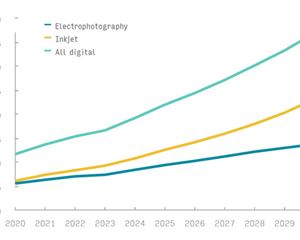How can digital ability open up new avenues?
In the good old days, offset business made monies, whether it was commercial or packaging. Life was simple. Not anymore. Long runs have become shorter. Short-run jobs have increased. There are times when a printer cannot meet the customer demand for short-run, resulting in loss of business. Digital printing gives that power to retain business.
29 Jul 2016 | By Priya Raju
Himanshu Pandey of Avantika shares his experience as new-age digital print firms and real-time notes on what is a business model for digital print in India. And how to create digital print applications in the below mentioned targeted markets to stay ahead of the game.
Corporate segment
The opportunity in corporate segment includes business cards, letterheads; printing of short-run marketing collaterals and product catalogues with specific technical/marketing information’s to target a set of consumers. Other opportunities include event-specific collaterals, which include invitation cards, docket's folders, notepads, which are targeted to a known customer base with the relevant region-based information.
Publishing segment
Here the important focus is on print on demand in order to reduce inventory cost and colour consistency in short run quantity compared to offset printing. Then there is stock printing for out of market books too. Today, new publishers produce limited quantity books for reviews before the actual launch as well as sample books for final production in large quantities, which is another good prospect to look at. Plus the static content in education materials is being changed to incorporate updated examples in the mid-year by top universities.
Proofing segment
The digital presses available in the market now, are more accurate in terms of producing fine halftones, clean and precise lines and type, smooth gradients and solids, which are comparable to most of the offset presses in mid-level segment. The digital presses along with their digital front ends are now able to produce internationally recognised industry standards such as FOGRA and GRACOL, which gives them an edge over pre-press houses.
Photo segment
Be it, a small passport size photograph or a large-size wedding album, people are spending money to print their memories. Then there is a trend to print custom invitation cards, which included an image related to the theme of celebration to add a personal touch. Now, with the availability of digital presses which are capable of handling different media ranging from a thin sheet up to a thick card stock, along with the ability to produce smoother face tones due to their constant innovation in ink technology provides an edge to digital printers over their old photo lab's counterparts.
End consumer segment
Photobooks, postcards, greeting cards, personalised desk, wall calendars, coasters, fridge magnets, photo jigsaw, puzzles, placemats, mouse pads, gift certificates, discount cards and the list go on. These are few examples which current customers are demanding to be printed with exclusivity with no price cut. Digital printing proves to be far more feasible for these types of applications as the quantities as well as the turnaround time is very least.
OTHER AVENUES
• Old book's restoration
• School/university certificates
• Coffee-table books
• To produce a limited quantity photographs
• Children’s story books with their personalised names in the script of a story
• Technical documentation like training manuals, posters, diagrams in region-specific languages
• Interactive prints using technologies such as QR codes, augmented reality, entry to secured events, etc
• Packaging segment which includes labels, boxes.
Himanshu Pandey is the director at Delhi-based Avantika Printers.












 See All
See All